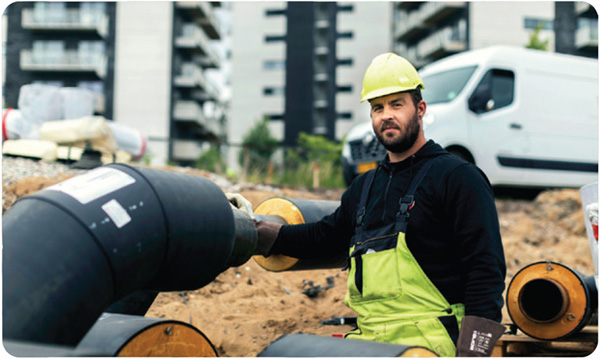Ambitious energy legislation and initiatives are right now lighting up the steps towards a decarbonised Europe. More district heating and digitalisation are key elements of the conversation. And so they should be. But it will require a joint effort to turn ambition into reality.
The European Green Deal was recently presented as a roadmap towards a climate-neutral Europe by 2050, and key initiatives like the Renovation Wave are set to stimulate faster and deeper renovation of inefficient building stock to deliver on the EU's climate and energy efficiency targets. Combined with, for example, the continued discussions on increased sector coupling, this means that the energy system of the future is becoming less and less futuristic. In fact, in the face of the devastating effects of the global COVID-19 pandemic, many consider the Green Deal ambitions a necessary part of Europe's road to economic recovery.
DISTRICT HEATING AT THE CORE
In a truly integrated energy system, district heating is the glue that binds everything together by providing the necessary flexibility to balance supply and demand. Local district heating networks create the links between different parts of the system to enable improved energy utilisation. And they provide the required infrastructure to integrate, store and distribute fluctuating energy from local renewable energy sources and waste heat.
Thanks to ambitious cities and utilities, some of the most developed and innovative district heating systems in e.g. Denmark already work this way today. However, research by Heat Roadmap Europe shows that as much as 21,500 additional district heating systems are needed in Europe. In other words, the question is no longer whether more district heating is required. It is how to scale up what we have already seen works – and digitalisation is part of the answer.
DIGITALISATION A KEY ENABLER
Digitalisation is the precondition for empowering consumers and managing the increasing complexity of district heating centred around renewables and waste heat. Smart meter data and digital solutions provide the very basis for utilities making the right decisions when it comes to lowering temperatures, increasing energy efficiency and optimising the entire district heating value chain. And with the Energy Efficiency Directive (EED) becoming effective later this year, consumers now also play a central role in the decarbonisation of Europe.
The overall ambition of the EED is to generate energy efficiency through a change in consumption behaviour motivated by improved insight for consumers. It states that energy meters installed after October 25th 2020 must be remotely readable and read monthly as of January 1st 2022. And by January 1st 2027, remotely read meters must be installed in all households. A key element of the EED is that meter data – in addition to being utilised by the utility – must be pushed to consumers. In this way, it combines digitalisation and sustainability by enabling them to also make informed decisions.
TOWARDS 2030 AND BEYOND
At Kamstrup, we welcome the new demands and recognise the opportunities they represent not only for European consumers but also for the green agenda and not least the district heating utilities determined to utilise the full value from their data. Together with our customers, we are already in the process of embracing and translating them into the innovative solutions that are needed to help utilities as well as consumers reach our common goal. But the path forward has never been more clear.
